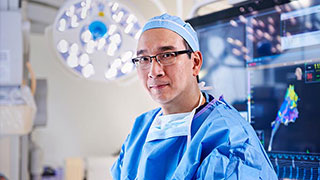Search for opportunities to participate in a clinical research study.
Ultrasound
New Patient Appointment or 214-645-8300
MedBlog
Results: 7 Locations
Cardiology
at UT Southwestern Medical Center at Park Cities 8611 Hillcrest Road, 3rd Floor, Suite 300Dallas, Texas 75225 214-692-3100 Directions to Cardiology Parking Info for Cardiology
Professional Office Building 2
5939 Harry Hines Blvd.Dallas, Texas 75390 214-645-8300 Directions to Professional Office Building 2 Parking Info for Professional Office Building 2
2 Clinics at this location
Clinical Heart and Vascular Center
at West Campus Building 3 2001 Inwood Road, 5th FloorDallas, Texas 75390 214-645-8000 Directions to Clinical Heart and Vascular Center Parking Info for Clinical Heart and Vascular Center
Imaging
at UT Southwestern Medical Center at RedBird 3450 W. Camp Wisdom RoadDallas, Texas 75237 (214) 645-9729 Directions to Imaging Parking Info for Imaging
Ophthalmology
at UT Southwestern Monty and Tex Moncrief Medical Center at Fort Worth 600 South Main Street, 1st Floor, Suite 1.500Fort Worth, Texas 76104 817-429-3050 Directions to Ophthalmology
Ophthalmology Clinic
at James W. Aston Ambulatory Care Center 5303 Harry Hines Blvd., 6th FloorDallas, Texas 75390 214-645-2020 Directions to Ophthalmology Clinic Parking Info for Ophthalmology Clinic
UT Southwestern Maternal-Fetal Medicine at Texas Health Plano
6300 West Parker Road, Building 2, Suite 127 Building 2, Suite 127Plano, Texas 75093 469-497-2980 Directions to UT Southwestern Maternal-Fetal Medicine at Texas Health Plano








